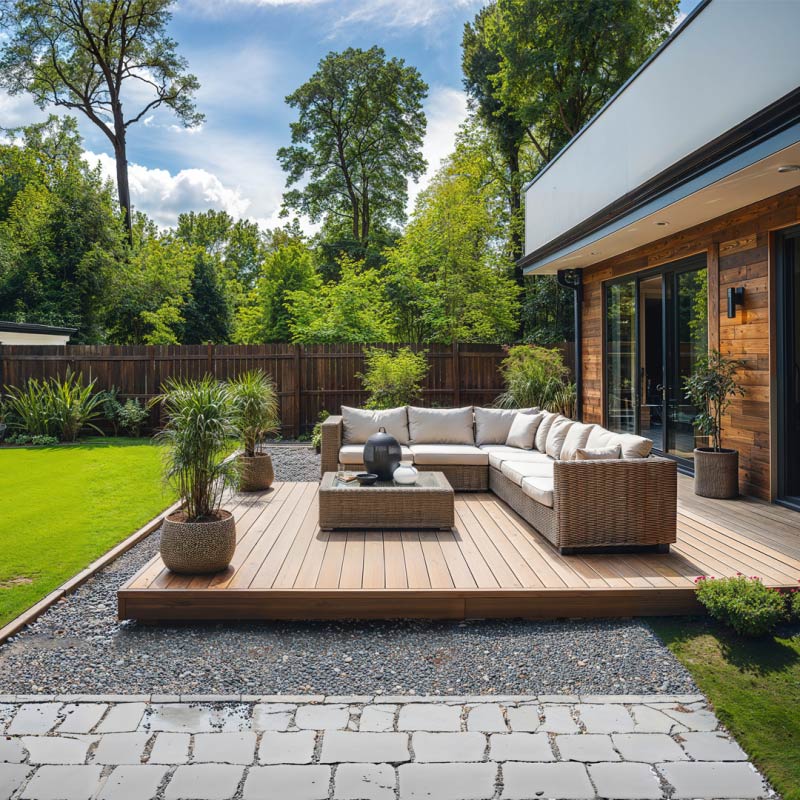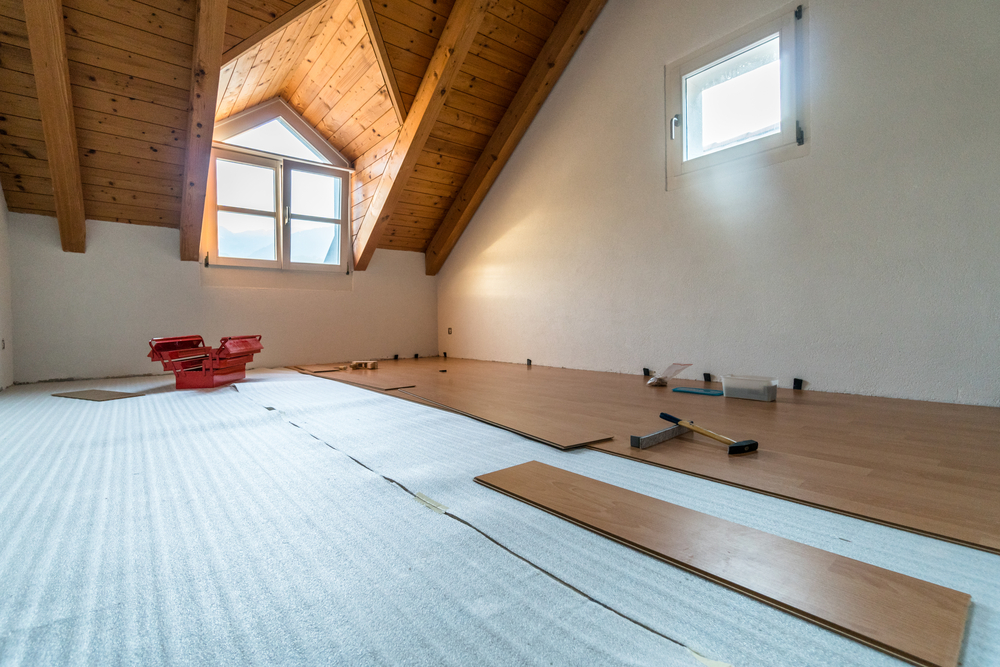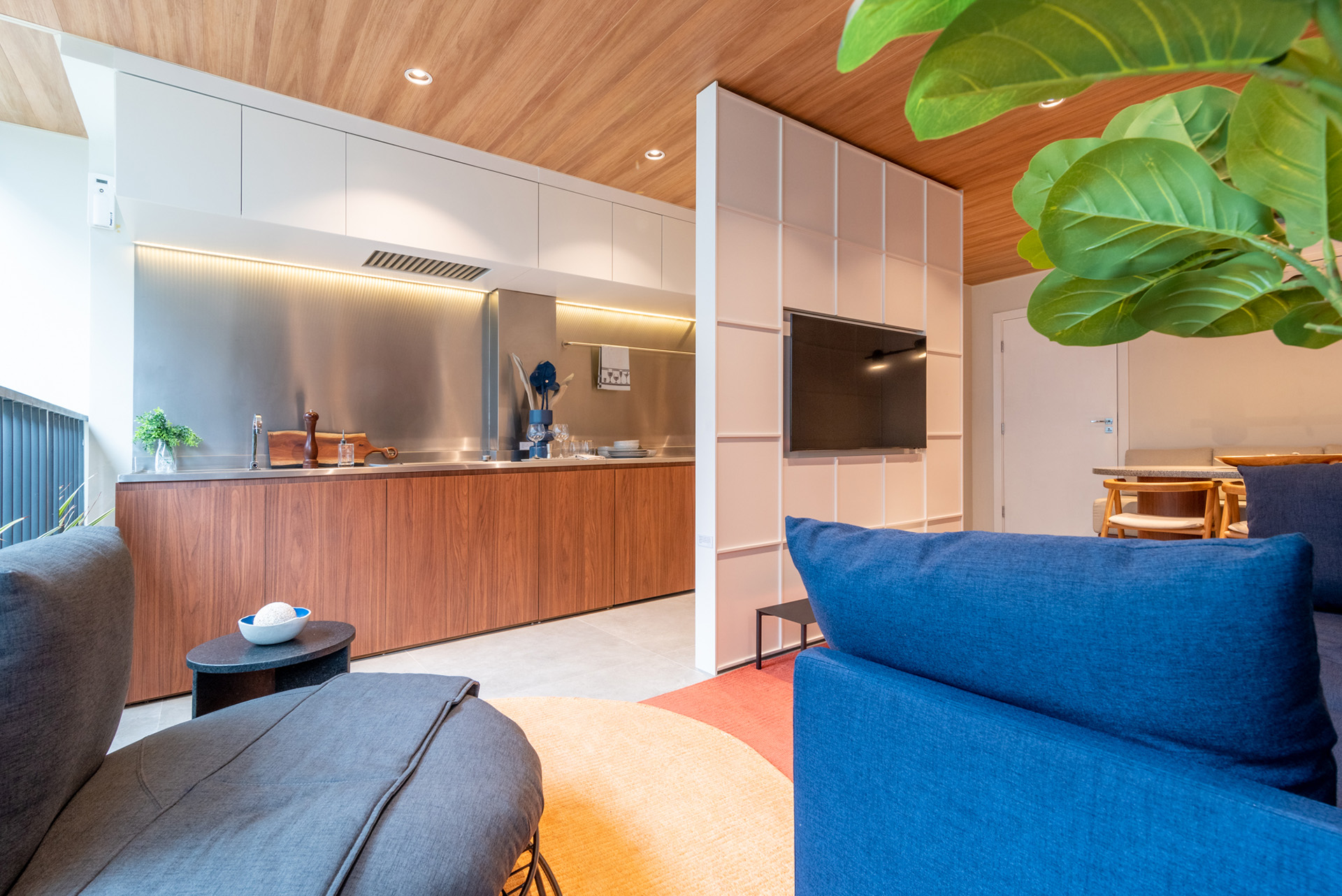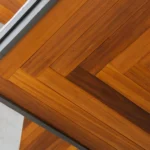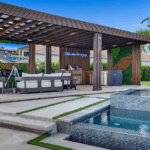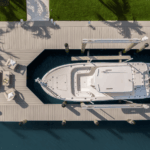Deck
5 Amazing Freestanding Deck Ideas
Envision a deck that stands independently, free from any attachment to your home’s exterior walls. Typically, when we think of decks, images of those seamlessly connected to a house, perhaps extending from a kitchen or living area, come to mind. Freestanding decks, however, revolutionized this concept by offering flexibility in placement anywhere on your patio.
This freedom allows for the creation of distinct outdoor “rooms” and maximizes the potential of uniquely shaped or larger spaces. Positioned near your home, these decks can emulate the look of an attached structure without the challenges of directly affixing them to your house.
In essence, a freestanding deck can be customized to meet your precise functional needs and design preferences, no matter how unique. Let’s delve into the versatile world of freestanding deck ideas and discover their many possibilities.
What Is a Freestanding Deck?
A freestanding deck is a self-supporting deck structure built independently from a house or building. Unlike attached decks, which rely on a building for support, freestanding decks stand alone with their footings and frame. This characteristic offers unique flexibility in placement and design.
Pros and Cons of Freestanding Decks
Pros:
- Flexibility in Location: They can be built anywhere on your property.
- No Structural Impact on Your Home: Avoids damage to your home’s exterior from attachments.
- Adaptability: Ideal for properties with uneven ground or special zoning restrictions.
Cons:
- Potentially Higher Cost: Requires additional support and materials.
- Permit Requirements: Depending on your location, a permit may still be necessary.
- Complexity in Construction: It requires more complex framing techniques.
DIY Tips on Building a Freestanding Deck
When considering how to build a freestanding deck, proper planning and understanding of construction basics are crucial. Here are a few tips:
- Plan Your Design: Use freestanding deck plans that fit your space and needs.
- Check Local Regulations: Determine if you need a permit and adhere to local building codes.
- Choose the Right Materials: Opt for durable materials like tropical hardwoods from Brazilian Lumber, which offer longevity and resistance to weather.
- Prepare a Solid Foundation: Ensure the ground is level and freestanding decks need footings to support the structure securely.
Material Choices: Why Tropical Hardwoods Are Best
There are many deck materials that you can choose from when building a durable and beautiful freestanding deck.
Species: Southern Yellow Pine, Douglas Fir
Pros:
- Cost-effective
- Widely available
Cons:
- Requires regular maintenance (sealing and staining)
- Susceptible to warping, cracking, and splintering over time
- Contains chemicals that can be harmful
-
Tropical Hardwood
Species: Ipe, Cumaru, Tigerwood, Garapa, Jatoba
Pros:
- Extremely durable and long-lasting
- Naturally resistant to insects, rot, and decay
- Beautiful and unique grain patterns
Cons:
- More Expensive
- Hard to work with due to density
- Requires pre-drilling for fasteners
-
Domestic Hardwood
Species: Oak, Maple, Walnut
Pros:
- Attractive and natural appearance
- Strong and durable
- Can be sourced locally
Cons:
- Requires regular maintenance (sealing and staining)
- Susceptible to insects and rot if not treated
- Not as durable as tropical hardwoods
-
Composite and PVC
Species: N/A (made from recycled wood fibers and plastics)
Pros:
- Low maintenance (no staining or sealing required)
- Resistant to insects, rot, and decay
- Wide range of colors and finishes
Cons:
- Can be expensive
- Some products can look artificial
- Susceptible to scratching and fading over time
-
Thermally Modified Wood
Species: Ash, Ayous, Pine
Pros:
- Enhanced durability and stability
- Resistant to insects and rot without chemicals
- Environmentally friendly
Cons:
- Can be more expensive than untreated wood
- Limited availability
- Requires specific installation techniques
Recommended Sizes for Decking
- 5/4×6
– Commonly used for residential decking
– Provides a comfortable walking surface
– Suitable for most decking applications
- 2×6
– Provides extra strength and durability
– Ideal for high-traffic areas or commercial use
– Can support more weight and larger spans
5 Freestanding Deck Ideas to Inspire You
1. Floating Deck with Roof or Pergola
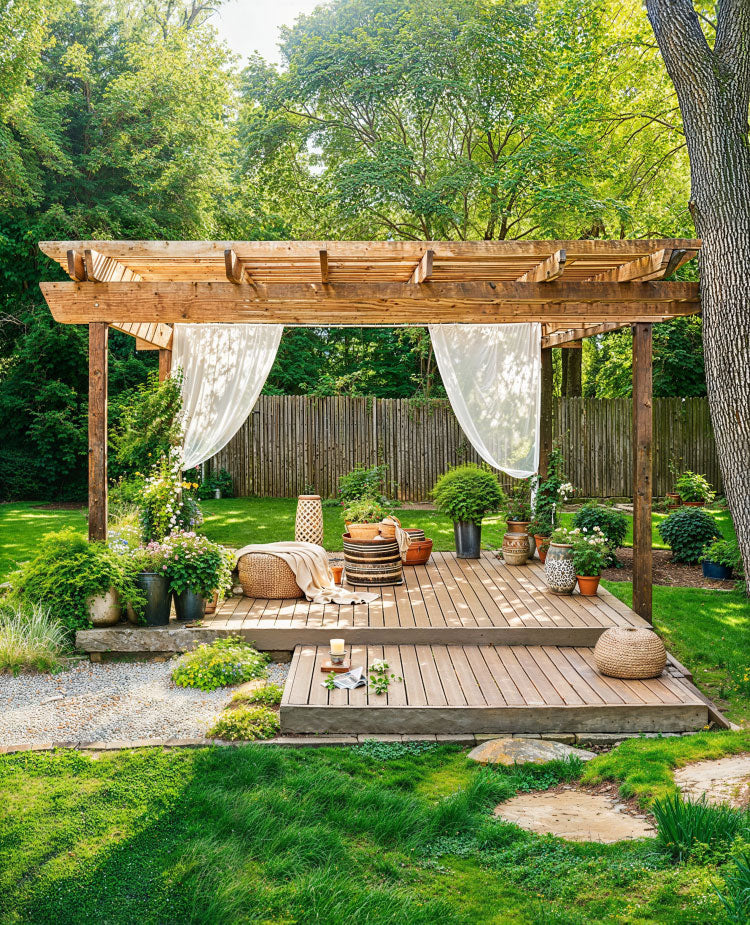
A floating deck with a roof or pergola provides a stylish and shaded outdoor retreat. These decks are elevated slightly off the ground, giving a light, airy feel, while the overhead structure offers protection from the elements, making it ideal for all-season enjoyment. This can be a peaceful spot for morning coffees or quiet reading. Opt for woods like teak or cumaru to naturally blend with the outdoor environment.
A floating deck with a pergola offers versatile decorating options to suit any style. You can leave the pergola’s structure bare for a minimalist look, or enhance it with curtains, cozy seating, hanging lights, and other decorative elements to create a personalized retreat.
Whether you opt for a simple, natural aesthetic or a more elaborate setup, the pergola on your floating deck is a canvas ready to be styled to your liking, transforming the space into your own private oasis.
2. Easy DIY 12×12 Deck
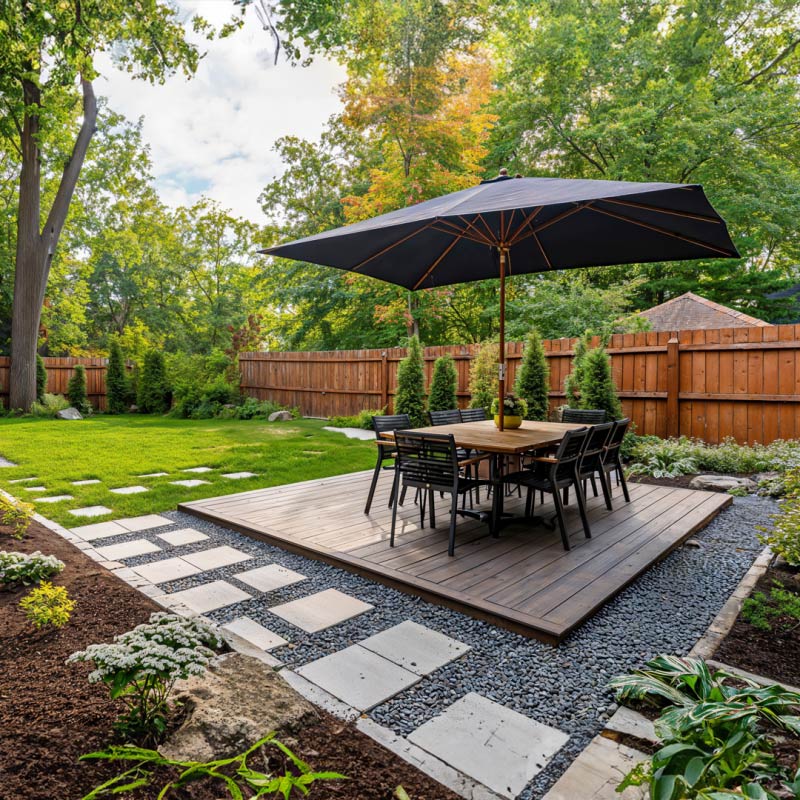
An Easy DIY 12×12 deck is a practical and versatile project for enhancing your outdoor living space. This size is compact enough to fit in most yards yet spacious enough to be functional for various activities. It’s a perfect weekend project that can significantly transform your outdoor area into a more usable and enjoyable space.
Once you have your 12×12 deck set up, you can personalize it to fit your lifestyle and preferences. The deck can be adorned with a variety of furnishings and decor such as comfortable sofas, a large umbrella for shade, a dining table for outdoor meals, and various plants to add a touch of nature and privacy.
This setup allows you to create a tailored outdoor retreat where you can relax, entertain, and enjoy the beauty of your garden.
3. Floating Deck with Fire Pit
A floating deck fire pit creates a distinct area for relaxation and social gatherings, making it a focal point in any garden or yard. Such decks are not anchored to a building, offering flexibility in placement and design, and allowing homeowners to customize their outdoor living spaces according to their preferences.
4. Viewing Platform
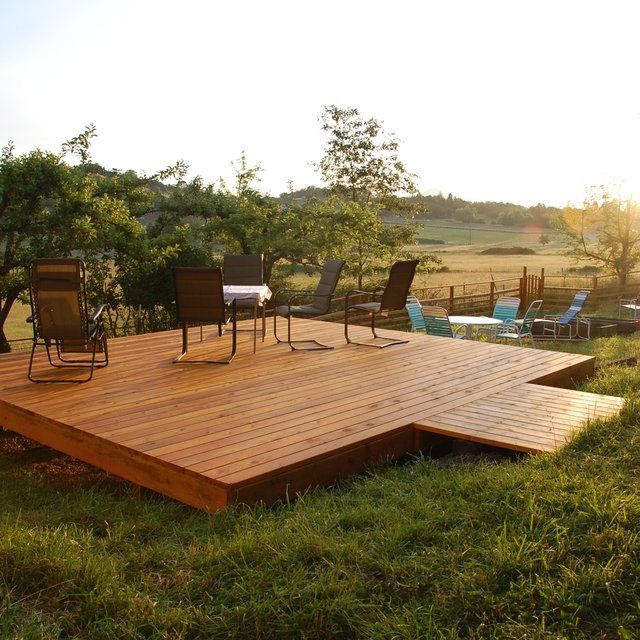
A viewing platform deck is an excellent addition for those with scenic properties, allowing you to fully appreciate and enjoy the natural beauty of your surroundings. This type of deck is typically raised to optimize the vantage point over the area, providing panoramic views that might be obscured at ground level.
In the photo, the deck exemplifies a perfect viewing platform with its strategic placement on a hillside. Its minimalist design, featuring clean lines and unobtrusive railings, ensures that nothing detracts from the breathtaking landscape. The large, open space is versatile, and suitable for hosting gatherings or simply for personal relaxation, with ample room for seating arrangements that can be customized to one’s needs.
The natural wood used in the construction harmonizes with the outdoor environment, enhancing the serene and picturesque setting. This type of deck not only adds value to your home but also enriches your living experience by merging indoor comfort with the splendor of the outdoors.
5. Deck With Built-In Benches
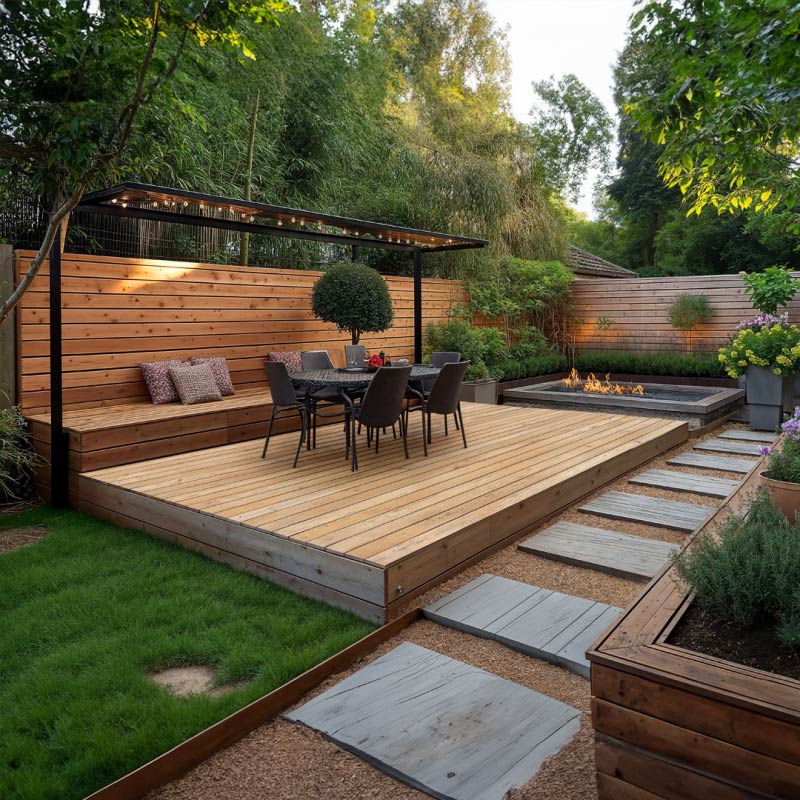
A deck with built-in benches is an innovative design choice that maximizes space and enhances functionality. These integrated seating options provide a seamless look, reduce the need for additional furniture, and create a welcoming area for social gatherings and relaxation.
In addition to the seating, you can also include a dining set or a warming fire pit, making it perfect for entertaining. This setup not only serves as a functional outdoor living area but also as a visually appealing focal point of the backyard.
Frequently Asked Questions
How to frame a freestanding deck?
Focus on a solid frame design using pressure-treated lumber, ensuring all connections are robust and secure.
Do I need a permit for a freestanding deck?
It’s common to need a permit; always check with local authorities to comply with regulations.
How high can a freestanding deck be?
The height can vary based on local codes, but decks below certain heights may not require a permit.
Do freestanding decks need footings?
Absolutely, footings are essential to ensure the stability and longevity of the deck.
Conclusion
Freestanding decks offer a versatile addition to any outdoor space, allowing for creative design and functional placement anywhere on your property. With the right design, permits, and materials like those from Brazilian Lumber, your freestanding deck can become a lasting, beautiful outdoor feature. Dive into the world of freestanding decks and transform your outdoor living experience.


